By: smmorris,
on 4/15/2012
Blog: Kid Lit Reviews
( Login to Add to MyJacketFlap)
JacketFlap tags:
nonfiction children's books, 5stars, Children's Books, poetry, seasons, NonFiction, Favorites, biology, ecology, botany, leaves, Add a tag
5 Stars Rhyming text and illustrations explore some of the many things a leaf can be, from tree topper to rain stopper. Includes facts about leafs and a glossary. A leaf is a leaf— A bit of a tree. But just try to guess What else it can be! This book, A Leaf Can Be [...]

By: yesisedit,
on 3/17/2012
Blog: Yesisedit's Weblog
( Login to Add to MyJacketFlap)
JacketFlap tags:
politics, science, Photography, Green, world, Ecology, help, Irish, society, Fair-e-tale, St.Patrick's day, Fuel for thought, My view, Thoughts, Art, nature, Ideas, Poem, Thank yous, Stories and art, Food shortages a boom!, Say it ain't so, 1, childrens poems, bail out, Words can be funny, story, Fun, Add a tag
With apologies to my ancestors, My interpretation of Skibbereen and post script.
They say it tis a lovely place, where in a saint might dwell,
so why did you abandon it father dear, the reason to me tell?
Oh son I loved my native land, with energy and much pride
‘Til a blight came over on my prats, my sheep and cattle died,
The rent and taxes were so high, I could not them redeem,
And that’s the true cruel reason why, I left dear old Skibbereen.
Oh, It’s sure I do remember, that bleak December day,
The landlord and the sheriff came, to drive us all away
They set my roof afire, with their cursed yellow english spleen
And that’s another reason why, I left dear old Skibbereen.
Your mother too, God rest her soul, fell on that snowy ground,
She fainted in her anguish, seeing the desolation laid all round.
She never rose, but passed away, from life to imortal dream,
She found a quiet grave, my boy, in dear old Skibbereen.
And you were only a wee young lad, and feeble was your frame,
I could not leave you with your friends, for you bore your father’s name,
I wrapped you in my overcoat , in the dead of night unseen
I heaved a sigh, and said goodbye, to dear old Skibbereen
o’ father dear, the day will come, when answer to the call
all Irish men of Freedom Stern, will rally one and all
ill be the man to lead the band, beneath the flag of green
loud and clear, well raise a cheer , remember Skibbereen
PS on St. Patrick’s day
The plight of the Irish immigrants who flooded the world in the time of potato famine
was caused as much by greed and prejudice as any lack of simple peasant food.
The poor Irish were driven from land by invaders, monetary greed, by taxes and starvation,
demonized like any culture the powerful wish to wash away so they may consolidate their power.
If scattered, the poor could not rise up, if not fed they would parish and be no threat.
Drunkenness is not the legacy my father gave to me, pride in my name and ancestory
of a race that will never give up or in until death takes me kicking to what lays beyond.
That is what my Father sang to me as his Father did to him.
John Murphy
       
This is part of a series of borders for an elementary school reader about ecology.
This is part of a series of borders for an elementary school reader about ecology.
This is part of a series of borders for an elementary school reader about ecology.
This is part of a series of borders for an elementary school reader about ecology.

By: yesisedit,
on 2/26/2012
Blog: Yesisedit's Weblog
( Login to Add to MyJacketFlap)
JacketFlap tags:
story, Thoughts, Art, politics, nature, science, Photography, Ideas, Poem, world, creation, Ecology, help, belief, insects, choices, society, Thank yous, Stories and art, Say it ain't so, 1, bail out, Fair-e-tale, Fuel for thought, My view, Life, greed, photo, Future, thought, look, political comment, Add a tag
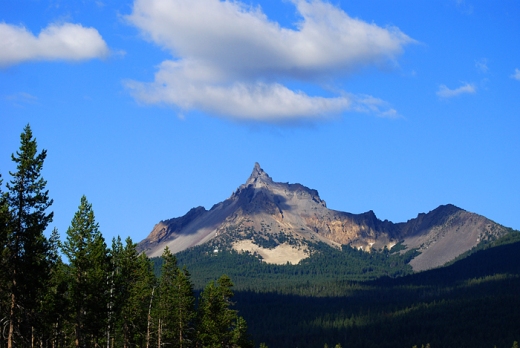 One of the, if not The, deepest questions of the universe. One of the, if not The, deepest questions of the universe.
You have to start with what you believe is the force that is the creator of this life I believe.
Some think of GOD as a human type creature in who’s image we are created, with long flowing hair, robes to make him modest though he needs to hide nothing from his creations as I see it, and a celestial kingdom where he, or she in some cases, sits reining judgement down upon the works he designed and gave free will to.
I can not see that which created me in such limited form. I can not even envelope the concept of never ending or forever just because I am temporary in this form at least. I do however believe I was created from and by the “GOD” that has no limits and this is exactly why I think I am made in it’s likeness, BUT not in it’s totality, there are things missing if I am separate FROM God, God did not make me GOD, God, or even god, GOD made me human, GOD made everything else what it is too I believe but I think, like one atom in my body or even smaller than that, to infinity small, that part is still a part of GOD though never “GOD”, only a part, that the smallest part of me is still me, I am made in the likeness of and from GOD, I am alive, that smallest part of me is alive, GOD must also be alive if we are all part of everlasting life.
Conclusion; Life never begins, it is never ended, It IS!
Consciousness in itself does not prove to me that I am not alive.
The fact that when sperm and egg combine and the DNA messages combine to spark cell multiplication (The spark of life if you will) and a plan is put into affect to form a body which will make a human or any other living thing would seem to be life to me.
BUT it was life even before that! The EGG and the SPERM were also alive, donated by the life forms of at least two separate beings, who were made in the image of GOD, who is also alive.
GOD talks to all of us in GOD’s own way. Some hear “Him” like “He” was talking in their language and sitting having tea I suppose. Others see the “Great Spirit” manifest as all that surrounds us and all that can not be seen or even heard but that still is. I am more from that camp I suppose but still believe all is possible.
The right to life for me is hard to conceive when I believe that life is never ending. The right to life is not for me to tell you, you may or may not have though if you threaten my life I will not hesitate to use what ever is at my disposal to protect mine and stop yours!
The question to me is more the quality of the life you give rather than just letting all life happen. If all in creation is from GOD then even the worst of it is sacred and the Jaines may be correct and may have more in line with current Christian values than most think. But if we do not take into account what we offer, if a human is brought into this world through violent action that threatens the life that brings it who is the killer here? The mother who was raped or is too young and will surely die from the birth or the entity being born who would kill it’s mother, most assuredly it would be the rapist but can we take his life either? I would say it is not my place to judge any of these unless they are me. I WILL FIGHT FOR MY LIFE! But a Mother must make the call of giving herself for another in my view. It may seem selfish or unjust but it must be hers with as much help and support from all sides as she can get. Advise and support but not Judgement and in the end her decision as final carrier of that which will always be alive to enter into this world.
If you believe in eternal life you will not be sad for the soul who returns to it’s maker but wish it return another time
This is part of a series of borders for an elementary school reader about ecology.
This is part of a series of borders for an elementary school reader about ecology.
This is part of a series of borders for an elementary school reader about ecology.

By: yesisedit,
on 12/9/2011
Blog: Yesisedit's Weblog
( Login to Add to MyJacketFlap)
JacketFlap tags:
society, Thank yous, Stories and art, Say it ain't so, 1, bail out, Fair-e-tale, Words can be funny, Fuel for thought, My view, story, Fun, Thoughts, Art, politics, nature, humor, Photography, Ideas, Children's book, world, Ecology, help, Add a tag
Nancy is the bestselling author of the four Bella and Britt Series books for children: One Pelican at a Time (eighteen weeks on Amazon Bestselling List), Sea Turtle Summer, Bella Saves the Beach and Mystery at Manatee Key. All are published by Guardian Angel Publishing. She and One Pelican at a Time and were featured in the PBS Tampa (WEDU) special, GulfWatch. Pelican was nominated for a Global eBook Award and has won the Literary Classics Seal of Approval. Nancy’s travels take her extensively throughout the world, most particularly Africa. She is US chair of a charity in Lamu, Kenya, that places girls in intermediate schools to allow them to further their education. She and her husband live in Tampa and St. Louis. I understand you were a university professor teaching classes about children’s and young adult literature before you started writing. How did the leap from teacher to author come about?
I thought fleetingly about writing for children through my years as an academic, but it never seemed the right time. After teaching children’s and young adult literature, though, the idea crystallized. The day after my granddaughter, Leah, was born, I wrote my first children’s book, I Held You on the Day You Were Born. Since then I’ve never looked back, and those pent-up books flow faster than I would ever have expected. So, in a real way, Leah (who is now five) is the true catalyst behind my writing. What makes you passionate about writing for children?
My entire academic career has been about children, from teaching young kids to teaching pre-service teachers. It was, I think, a natural segue to begin writing for them. The combination of my love of all things books and the real joy I feel about children and their growing awareness of new ideas led me to this passion. Congratulations on the publication of your latest children’s picture book, Sea Turtle Summer. What was your inspiration for this story?
My morning walks on Clearwater Beach provide me with so many ideas, particularly for the Bella and Britt Series. With Sea Turtle Summer, I walked by a cordoned off area of the beach that contained a sea turtle nest. The orange tape and the affixed state seal warning about the serious consequences of tampering began the process in my mind. Clearwater Beach, always voted one of the three best beaches in the world, is a sea turtle’s nightmare if she happens to lay her eggs there. There is so very much activity—from sun worshiping, to volleyball games, to kids’ digging sandcastles (hatchlings cannot get over them), the problem became defined. The tension was set up. All we needed was a sea turtle laying her eggs in an unfortunate place, and Bella and Britt were back on the job! Tell us something about your protagonist, Bella. What kind of girl is she and why do you think young readers will love her?Bella is a go-to girl. She thinks on her feet, is self-assu

By: yesisedit,
on 12/5/2011
Blog: Yesisedit's Weblog
( Login to Add to MyJacketFlap)
JacketFlap tags:
bail out, Fair-e-tale, Words can be funny, Fuel for thought, My view, story, Fun, Thoughts, politics, nature, humor, Photography, Ideas, world, Ecology, society, Say it ain't so, 1, childrens poems, Add a tag

By: Mayra Calvani,
on 10/11/2011
Blog: Mayra's Secret Bookcase
( Login to Add to MyJacketFlap)
JacketFlap tags:
children's books, C.K. Omillin, penguin stories for children, omillin planet, penguins, ecology, animal stories, planet, green planet, eco, Add a tag

The Adventures of Zeppi: New Friends (book 1) By C.K. Omillin Blurb.com Children’s picture book, 24 pages, $15.55 www.omillinplanet.com In the middle of the night, a mysterious red truck races down Happy Town. Its cargo? Cages filled with penguins on their way to be shipped to another country. Suddenly the doors fling open and one cage rolls down the street and lands in a garden. From it, a little penguin steps out fearfully, awed at the world around him. Up until now, he has only known the constraints of the zoo. In the morning, a boy named Alesdor discovers him and decides to keep him. Naturally, they immediately click and become the best of friends. Though the little penguin, Zeppi, is heartbroken from being separated from the rest of his family, he finds warmth and affection in Alesdor, who is as anxious for a friend as his new companion. This children’s book by first-time Belgian author C.K. Omillin put a smile on my face throughout; not only because it’s about a penguin (and who doesn’t love penguins?), but because the story is sweet and weaves elements of friendship, family and ecological, planet-friendly values. This is the first instalment in Th
View Next 16 Posts
|




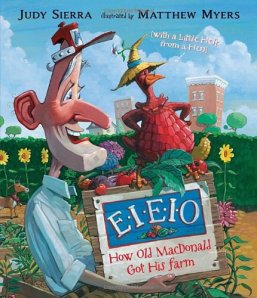
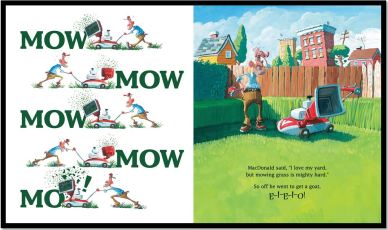
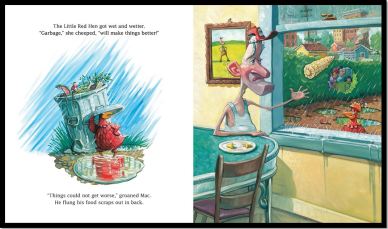
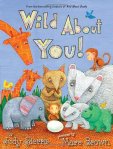
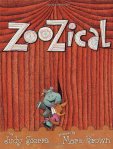

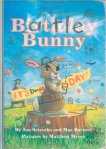
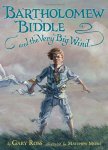


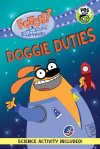
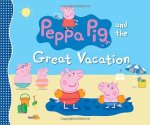

















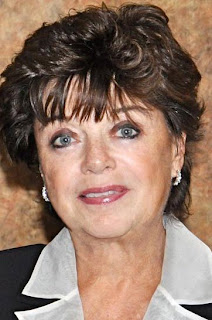




Love the aquanaut photo.
Only 5% of the ocean- how amazing. What a future there is in that!
This sounds like a wonderful non fiction addition for our class library. Thank you!
I love books about chasing dreams and I enjoy looking at the ocean. Will be sure to check this one out. Thank you for the review!
I am hoping that it will be my daughter's future. She, too, has "lost her heart to the water." :)